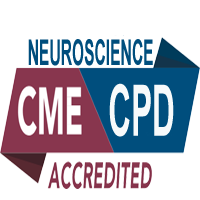Alok Sharma
NeuroGen Brain & Spine Institute, India
Title: Clinical results of Stem Cell Therapy in Neurological Disorders
Biography
Biography: Alok Sharma
Abstract
Background: While oral anticoagulation (OAC) is universally indicated for patients with mechanical heart valves (MHVs), the time for OAC reinitiation following anticoagulant-associated intracerebral hemorrhage (ICH) is uncertain. We sought to determine the optimal timing for restarting the OAC and the associated clinical outcomes in patients with MHVs following ICH. Furthermore, we surveyed the practice preferences of North American neurosurgeons and thrombosis experts on optimal timing of restarting the OAC in this particular group of patients.
Methods: We performed a systematic review and a meta-analysis of studies published from January 1950 to April 2014. Medline (Ovid), Embase, Scopus, the Cochrane Library, the Cochrane Controlled Trials Register, LILACS, Web of Science and Global Health were searched for studies reporting the time for re-initiation of OAC in patients with MHV following ICH. Extracted data was on the type of initial ICH, use of cranial surgery, presence of atrial fi brillation, type of MHV, position of MHV, number of MHVs, and timing of OAC re-initiation. In addition, the criteria for study selection included data on valve thrombosis, thromboembolic events or ICH recurrence data, calculated absolute risks, and assessing the eff ect. of anticoagulant resumption timing on ICH recurrence via meta-regression. A cross-sectional survey was disseminated to North American members of the American Association of Neurological Surgeons and the International Society for Thrombosis and Haemostasis. Demographic factors, as well as a clinical scenario with 14 modifiable clinical risk factors were included in the survey.
Results: 23 case-series and case-reports were identifi ed and meta-regression was done. Overall proportion of ICH recurrence was 13% (95% confi dence interval [CI], 7% – 25%), while valve thrombosis and ischemic strokes occurred at 7% (95% CI, 3% - 17%) and 12% (95% CI, 5% - 23%), respectively. A trend towards lower ICH recurrence was observed with delayed OAC re-initiation (slope estimate -0.2154, p=0.10). Recurrence rate ranged from 50% with OAC re-initiation at 3 days to 0% with re-initiation at 16 days. 504 physicians completed our survey (response rate= 34.3%). Majority of participants were affi liated with academic centers, and managed ≤ 10 ICH patients with MHV per year. Th ere was wide distribution in response on optimal timing for OAC re-initiation following an ICH: 59% and 60% preferred to re-start OAC between 3 and 14 days following the hemorrhagic event (median = 6-7 days). Smaller hemorrhages (<30cm2), CHADS2 score ≥2, concomitant venous thromboembolism, mitral valve prosthesis, caged-ball valves and multiple valves prompted earlier OAC re-initiation.
Conclusion: From our meta-analysis restarting OAC in day 4 seems to be associated with low risk of recurrent ICH or valve thrombosis, however this conclusion is limited by the quality of the studies. We support the urgent need for high-quality randomized studies in this population. Moreover, based on our collected survey data, there is a wide variation in the current practice of neurosurgeons and thrombosis specialists when they encounter patients with ICH and MHV, though decisions were influenced by patient- and valve-related factors. As our observed variation likely reflects the immense gap in current evidence, prospective randomized trials in this population are therefore urgently needed.
Biography
Stem cell therapy has shown great potential as a treatment strategy for neurological disorders. Autologous bone marrow mononuclear cells have shown a positive outcome in these disorders due to their obtainability, safety and effi cacy. In autism, out of 32, 92% cases showed improved social interaction, emotional response, speech and communication, behavior, cognition and sensory aspect on ISAA, CGI and FIM/WeeFIM. In cerebral palsy, 95% out of 40 patients showed improvements in oromotor activities, neck control, sitting balance, standing, walking balance and speech. Th ese improvements correlated with improved brain metabolism recorded in the PET CT scan. In spinal cord injury, 91% out of 110 patients in thoracolumbar SCI and 74% out of 56 patients with cervical SCI showed improvement in spasticity, sensation, trunk control, bladder management, standing and sitting balance, ambulation and ADLs. Changes were recorded in ASIA, FIM scale and electrophysiological studies. In head injury, 93% out of 14 cases showed improvement in balance, voluntary control, muscle tone, memory, oromotor activities, cognition, coordination, speech, communication, ambulation and ADLs. In muscular dystrophy, 86.67% out of 150 showed improved strength in trunk, upper and lower limbs alongwith gait. 6 patients demonstrated muscle regeneration on musculoskeletal MRI and 9 showed improvement in EMG. In ALS, as compared to the control population (n=20), the survival duration of the treated population (n=37) increased by 30.38 months. In Stroke, improvements were observed in ambulation, hand function and standing and walking balance with ischemic stroke demonstrating better recovery than hemorrhagic stroke.
No major adverse events were reported.

